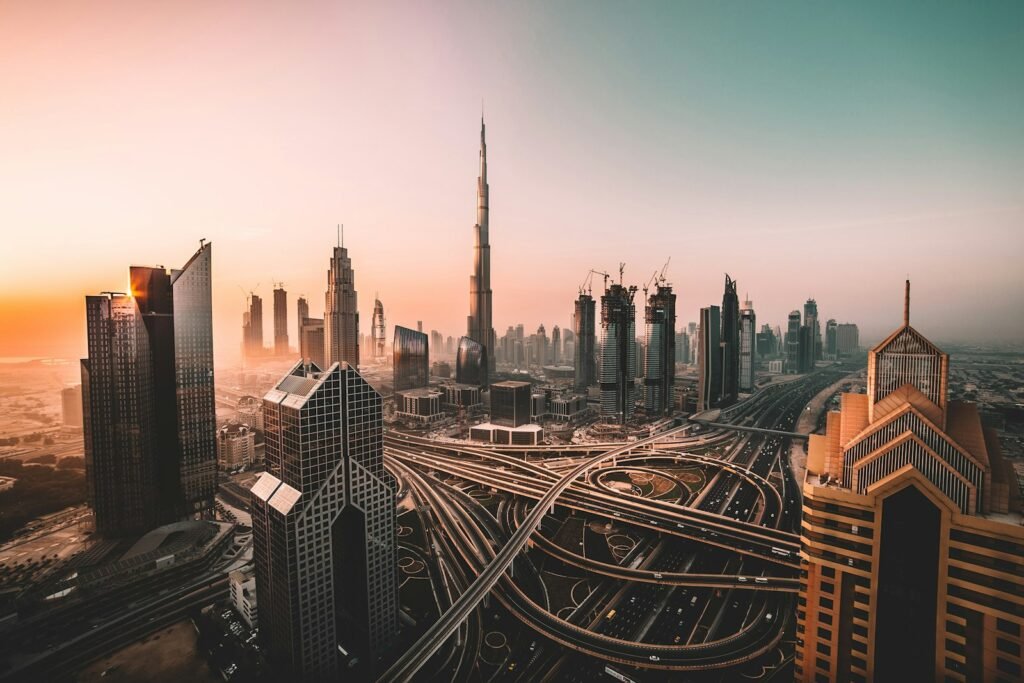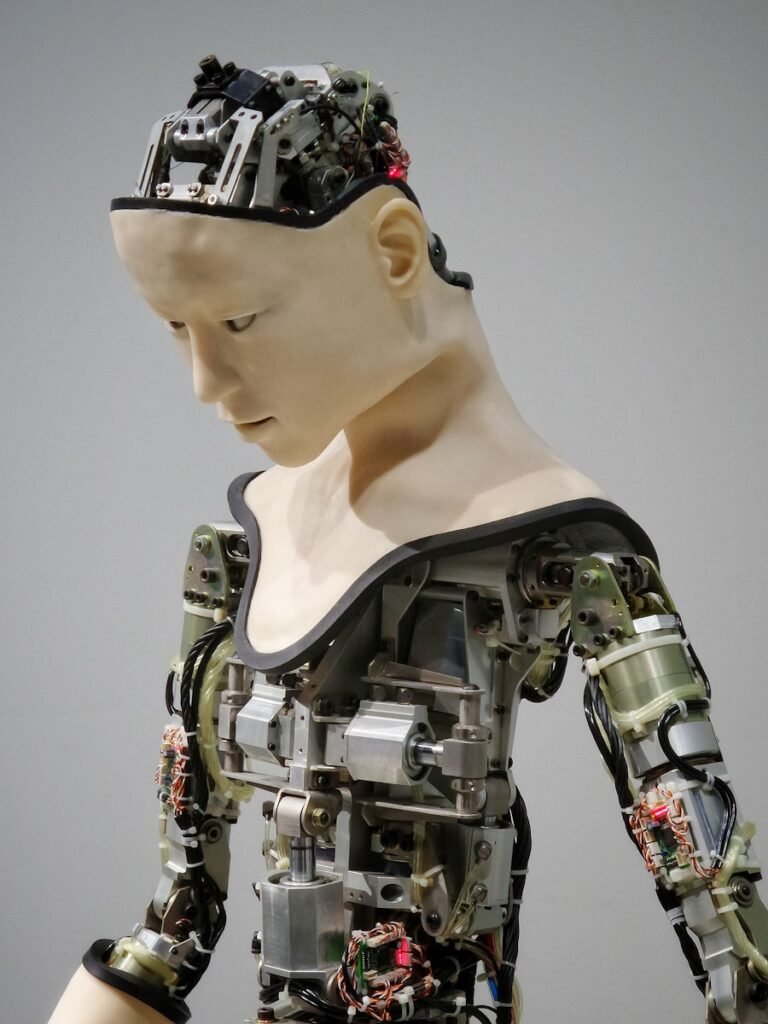
Smart City Initiatives Around the World
Smart cities, you say? Oh, the mere mention of it sparks a whirlwind of excitement among us all. From bustling urban jungles to serene little towns, the globe is alive with avant-garde endeavors aimed at revolutionizing city life. These initiatives are like a sudden gust of wind in a world dominated by chaos and commotion.
Now just imagine: sleek, AI-infused transportation networks whizzing through city streets, easing congestion and cutting down on emissions. It’s almost surreal, akin to scenes from a science fiction blockbuster. But hey, this is our reality now! As tech oracle Tim O’Reilly once mused, “Cities possess an irresistible pull… brimming with endless opportunities.” And indeed we are tapping into that potential with these smart city schemes sprouting up worldwide. It’s all about streamlining processes, promoting sustainability, and injecting that dash of futuristic flair that leaves you breathless exclaiming,”Wowza! The future has arrived!
Innovative Solutions for Urban Traffic Management
Ah, behold the perplexing urban landscape – where traffic jams materialize as frequently as pigeons flock to the park. But fret not, dear readers, for the horizon of urban traffic management gleams brighter than a yellow taxi cab under a blazing sun.
Picture a realm where traffic lights possess the uncanny ability to foresee gridlock before it ensues. Well, lo and behold! Such a realm is closer than you think! With AI-fueled traffic control systems at play, cities now have the power to scrutinize real-time data and tweak signal timings in an instant. In the wise words of Henry Ford, “Coming together is a beginning; keeping together is progress; working together is success.” These intelligent systems embody just that – collaborating harmoniously to uphold smooth and unwavering traffic flow.
But hold your breath, for there’s more! Have you ever envisioned a parking space miraculously appearing precisely when you need it most? Cease dreaming my companions. Thanks to AI algorithms and sensors entrenched within pavements, municipalities can now direct drivers towards vacant parking spots with merely a tap on their smartphones. It’s akin to having your own parking deity whispering directions sweetly into your ear. Just as the age-old adage gs, “The road to success is always under construction,” and with these groundbreaking solutions for urban traffic management in place, our journey towards a seamless and efficient cityscape has already begun its course.
AI-Powered Waste Management Systems
Have you ever pondered the mind-boggling potential of AI in transforming something as mundane as waste management? Brace yourselves, for AI-powered waste management systems are about to turn things upside down! Imagine this: intelligent sensors nestled within garbage bins, detecting waste levels and optimizing collection routes in real-time. It’s as if a mystical trash fairy is using algorithms instead of spells to keep our streets spick and span.
In the realm of waste management, efficiency reigns supreme, with AI acting as the secret ingredient that makes it all click. Thanks to the magic of machine learning, these systems can anticipate when bins will hit capacity, schedule pick-ups accordingly, and even analyze waste composition to encourage recycling efforts. It’s akin to having a personal aide for rubbish disposal – only this one doesn’t grumble about getting their hands dirty. So kick back, relax, and let AI handle the dirty work while you mull over the marvels of technology in the most unexpected domains.
The Impact of Smart Street Lighting on Energy Efficiency
In the ever-evolving landscape of urban innovation, smart street lighting emerges as a shining example of energy efficiency. No longer do we see streets drowned in unnecessary light – with the marvels of technology at our disposal, we can now illuminate the path ahead in a more sustainable fashion. Envision this: streetlights that adjust to their surroundings, flickering or gleaming brighter depending on the presence of passersby or vehicles. It’s not just light; it’s intelligence in motion.
Picture strolling down a boulevard where the lights appear to twirl ahead, leading your way like a loyal guide. It’s not sorcery; it’s the might of smart street lighting. These systems don’t merely conserve energy – they also bolster safety and protection for all. As dusk descends and the city buzzes with activity, these astute lights are there to brighten the road to a more radiant and efficient tomorrow. With each bulb illuminated, we edge nearer to a realm where every watt holds significance and every stride forward is progress towards an eco-friendlier future.n
Enhancing Public Safety Through AI Surveillance
The challenge of maintaining public safety on our city streets is no laughing matter. It can be a perplexing task indeed. However, fear not, for AI surveillance comes to the rescue like a burst of energy from a digital superhero, keeping watch over our neighborhoods with an eagle eye for trouble before it even rears its head. Picture this: virtual sheriffs patrolling the streets round-the-clock, tracking suspicious activities and analyzing patterns in real-time.
They say that intuition is invaluable, and AI certainly has a talent for swiftly sifting through data to predict potential risks before they spiral out of control. Envision a world where security cameras are more than just passive bystanders – they are active crime-fighting allies working tirelessly to prevent criminal acts and safeguard our communities. With AI at their side, these crime analysts operate at warp speed, identifying anomalies quicker than you can utter “crime prevention.”
Thanks to AI surveillance taking the lead, it’s not merely about reacting to emergencies; rather, it’s about being steps ahead of any threats looming on the horizon and ensuring public safety like never experienced before.
Improving Healthcare Access with Smart City Technologies
Envision a world where healthcare is just a tap away, thanks to the marvels of smart city technologies. Picture yourself meandering through busy city streets, feeling unwell, only to receive a sudden notification on your device directing you to the nearest healthcare center with minimal wait times. It almost seems like something straight out of a futuristic film, doesn’t it? But believe it or not, this reality is already upon us.
With the aid of AI and cutting-edge smart city innovations, healthcare access is undergoing a transformation that defies conventional expectations. From predictive analytics foreseeing health trends in specific regions to mobile health applications bridging the gap between patients and medical professionals in real-time, the possibilities seem boundless. As renowned healthcare pioneer Florence Nightingale once proclaimed, “Apprehension, uncertainty, waiting; are these not the very delights of an ingenious mind?” And within the realm of smart city technologies, her words resonate more profoundly than ever before. The convenience, efficiency, and efficacy offered by these advancements are reshaping the landscape of global healthcare accessibility.
Transforming Urban Planning with Data Analytics
Urban planning has long been shrouded in mystery and gut feelings, but behold the power of data analytics – a game-changer of epic proportions. City planners are now equipped with the ability to make decisions based on concrete information that truly shapes the evolution and expansion of our urban spaces. It’s like moving from blind luck to hitting the mark every single time. As Jeff Risom so aptly phrased it, “Data is the new oil for the 21st century. It’s as crucial as that.” And my oh my, how right he is!
Just picture being able to foresee traffic flow, dissect public transit trends, and even predict where future developments should take place all through tangible data analysis. It’s akin to possessing a working crystal ball! Data analytics not only aids us in current planning endeavors but also offers a sneak peek into what lies ahead for our cities. In the wise words of Jake Porway, “Data is a mighty weapon, yet its strength lies within those who wield it.” Let us seize this power and revolutionize our approach to urban design, one data point at a time.
Creating Sustainable Urban Environments with AI
Envision a city where every choice is influenced by the intricate web of artificial intelligence – a city that flourishes on sustainability and ingenuity. In this urban paradise, AI acts as an imperceptible force molding our surroundings, from optimizing energy usage to minimizing waste. It’s akin to having a city-wide personal assistant, continuously processing data and crunching numbers to enhance efficiency and promote eco-friendliness. As the esteemed AI guru Geoffrey Hinton once remarked, “AI is the new electricity,” and in this AI-infused metropolis, the possibilities are truly mind-boggling.
Picture strolling through streets brimming with AI-driven sensors that monitor air quality, traffic patterns, and energy consumption in real-time. These intelligent technologies not only simplify our daily routines but also contribute towards a cleaner, more sustainable future. The forward-thinking Elon Musk famously mused, “With AI, we are summoning the demon,” yet in this technologically advanced cityscape, we are summoning innovation and advancement. By harnessing the potential of AI, we can establish a harmonious equilibrium between urban growth and environmental preservation; paving the way for a brighter tomorrow where sustainability isn’t merely an objective but an integral part of life itself.


